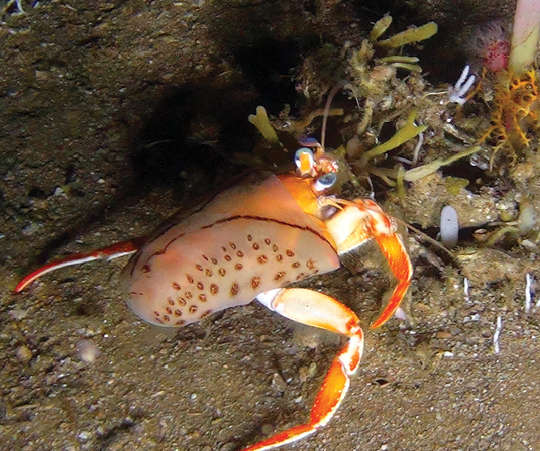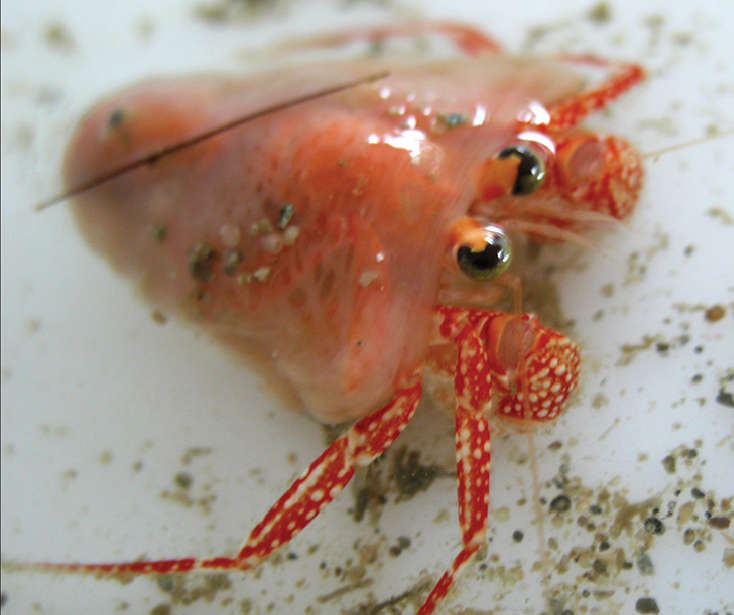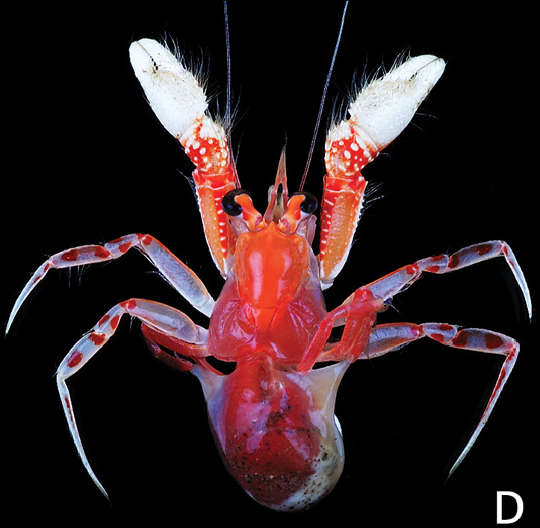This article was published in Scientific American’s former blog network and reflects the views of the author, not necessarily those of Scientific American
Let other hermit crabs use hard, uncomfortable shells that have to be rotated every 5,000 scuttles. Hermit crabs in the genus Paguropsis and Paguropsina have stumbled on a much better solution: flexible, toxin-secreting, cozy sea anemones that can be pulled up and down like a blanket.
In the western Pacific and Indian Ocean, they gad about the seafloor making all the other hermit crabs jealous of their fabulous ballistic millinery.

Paguropsis andersoni. Credit: DST, NRF ACEP Spatial Solutions cruise
On supporting science journalism
If you're enjoying this article, consider supporting our award-winning journalism by subscribing. By purchasing a subscription you are helping to ensure the future of impactful stories about the discoveries and ideas shaping our world today.
And they’re so cute too …. awwwwwww.

Paguropsis typica. Credit: Bertrand Richer de Forges
First described from a specimen collected by the pioneering 1874 HMS Challengerexpedition, blanket hermit crabs have been seldom seen by humans since. However, a recent French-sponsored biodiversity study (let it not be said that the French don’t try, in spite of my last post) of the Indo-West Pacific encountered many blanket hermit crabs, resulting in the discovery and naming of five previously undescribed species.
I have many questions about these crabs. Can the anemones wrapped around these crabs live independently? How and when do the anemone and the crab find each other? How effective are anemone-slankets relative to shells? I don't think scientists yet know the answers, given how little seen and studied these animals are.
Though their cnidarian hinder-covers are certainly their most striking feature, blanket hermit crabs do possess few other notable traits that we can observe. Unlike regulation hermit crabs whose bodies are coiled to fit inside mollusk shells, these crabs are symmetrical. They have also lost the rasps other hermit crabs use to manipulate their shells, but have gained bear-claw or ice-tong-like appendages. With these they can tug their blankets all the way up to cover their heads to help keep the monsters away.

It's so embarrassing to be caught with your anemone down. P. confusa tugs on its blanket. Credit: Tim-Yan Chan
Reference
Lemaitre R, Rahayu DL, Komai T (2018) "A revision of “blanket-hermit crabs” of the genus Paguropsis Henderson, 1888, with the description of a new genus and five new species" (Crustacea, Anomura, Diogenidae). ZooKeys 752: 17-97. https://doi.org/10.3897/zookeys.752.23712